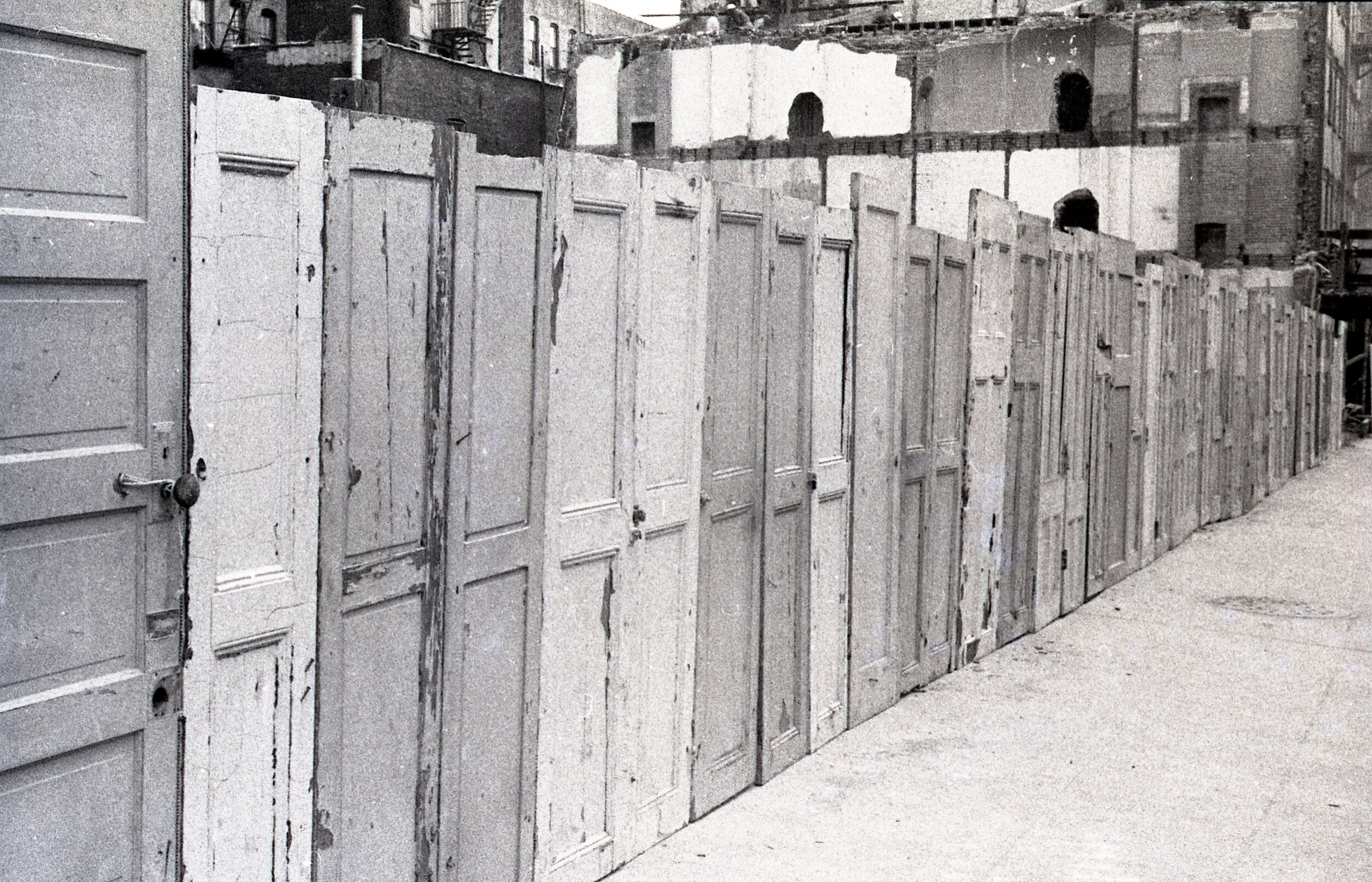Unexpected Perspectives
The Scott Hyde Archive
In 1947, a young photographer named Scott Hyde took the leap from the West Coast to the East.
Sixty-five years later, near the middle of the country, a chance meeting led to a remarkable relationship. A recent graduate of Texas Tech University in Lubbock, I was freelancing and looking for work. After receiving training as an archaeologist and studying philosophy, I had relocated to Amarillo to be closer to family. I could not have anticipated how the move would change the course of my studies and my career.
I met Scott Hyde, then more or less retired, in October of 2012 at a fundraising event for the Amarillo Museum of Art. Our brief meeting led to regular weekly sessions where I would help him corral a range of paper mountains in his living room. (This is where my training in archaeology came in handy.)
One afternoon I found a photo-mosaic of three men at a kitchen table. Even with my limited knowledge of art, I was able to recognize one of the names. In Scott’s shaky handwriting, the picture was labeled: “Robert Watts, Roy Lichtenstein, and Robert Filliou.” I asked him about the photo, and he said, nonchalantly, “Oh, those are some buddies I had in New York.” It was that moment I knew I was no longer just tidying up piles of photographs but organizing an archive. Over the ensuing years, I have learned much about the art world in which Scott Hyde was not only an observer, but a participant. A profound appreciation of his methods and techniques developed while rediscovering images that had been filed away for decades. Scott Hyde’s photos allow the viewer a chance to see a well-known place, like New York City, in new ways.
From the beginning of Scott Hyde’s time in New York City, he was fascinated by the structures that surrounded the bustle of activity in the urban jungle. For a city that was (and is) in a constant state of change and redevelopment, Hyde captured moments that exemplified the breakneck pace characteristic of the Big Apple. Though they were meant as simple snapshots, the sophisticated aesthetic of his photos is evident. His images show ornate classical architecture topped with rudimentary television technology, or sleek glass office buildings juxtaposed with crumbling and patched-together brick structures. Even destruction and decay expose highly stylized design elements that speak to a building’s former life as a center of activity.
The vertical nature of the cityscape creates a vertical topography wherein our view is filled with architectural gestures, marking the passing of time with variations in style and materials. Innovation drives change: doors, pulled from a demolished apartment building, find new life as a fence. The new wrestles with the obsolete, the fantasy of progress is interrupted with chaotic debris. In a place with more building than sky, the field of vision is transformed as well—a never-ending cluster of buildings serves as a solid base to a looming horizon, if you can get high enough to see it. From the ground, buildings become imposing monoliths with the right light against the night sky.
Scott Hyde captured more than the physical structures of New York City—he was able to capture its developing character, giving us new and unexpected perspectives on a city we thought we knew.
Scott Hyde (b.1926) worked as both a commercial and artistic photographer, drawing little distinction between the two. His work was featured in numerous commercial campaigns of the mid-twentieth century, and his photographs graced the covers of albums by Dave Brubeck and Miles Davis. Hyde was awarded a Guggenheim Fellowship for Photography in 1965.
Hyde’s work is in the collections of the Museum of Contemporary Photography, the International Center of Photography, the Smithsonian American Art Museum, and the Museum of Modern Art in New York.
Renea Dauntes is head of the Scott Hyde Archive in Amarillo, Texas, and is a Master of History candidate at West Texas A&M University in Canyon, Texas.
View more work by Scott Hyde:
Museum of Modern Art (MoMA) https://www.moma.org/artists/2789
The Smithsonian American Art Museum https://americanart.si.edu/artist/scott-hyde-2378
Museum of Contemporary Photography (MoCP) https://www.mocp.org/detail.php?t=objects&type=browse&f=maker&s=Hyde%2C+Scott&record=9
International Center of Photography https://www.icp.org/browse/archive/constituents/scott-hyde?all/all/all/all/0










